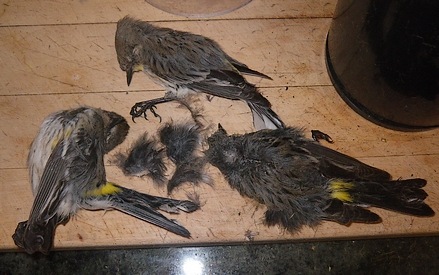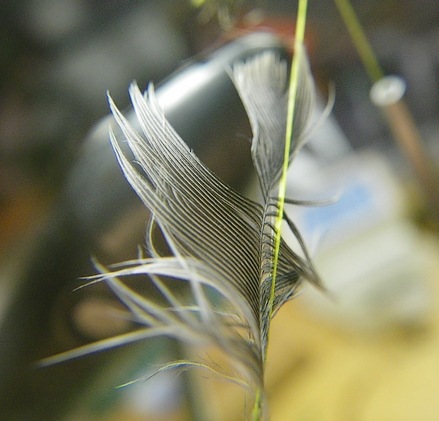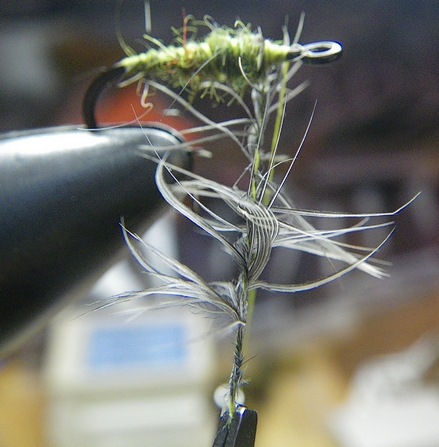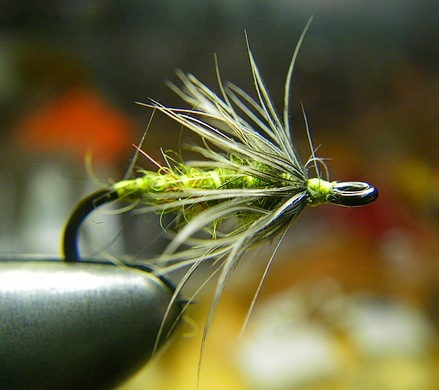He looked both ways before passing me the baggy, and being as it’s California I didn’t leave it out in the open for prying eyes, quickly tucking the goods into a breast pocket, before returning to the truck whistling innocently.
I might have been less eager if I’d known more about songbirds and whether you’re even allowed to keep one, let alone how many in possession and which warbler gives the electric chair without the luxury of trial.
Once the evidence was tucked into the freezer I did a little unrefined search to determine that I was now in violation of most fish & game legislation, both federal and state, and in addition to tempting fate with my “salvage” of three dead birds, the next knock on the door is liable to be the National Wildlife Service in full body armor.
Your cats can keep killing birds with no threat of legal reprisal. I don’t think that you can be held responsible, unless you have the feathers in possession. A few feathers in your backyard probably won’t get you into trouble. You, however, can’t legally even pick up a feather that incidentally falls off of a protected songbird. If it isn’t a game species, you probably can’t legally keep it. This is what we have to do. First, we need a federal “special purpose salvage” permit from US Fish and Wildlife. This give us the right to pick up dead migratory birds, as the feds have jurisdiction over migratory birds. Second, we need a state salvage permit as all songbirds are protected. In addition, I must keep detailed records as to what is done with every bird that comes into my possession. That is, is it turned into a study skin, disposed of or released. Finally I have to have a federal permit for any federally listed threatened species and another permit for any bald eagles. That means a separate permit for each specimen. Then there is a state permit for all state listed threatened species. What does this mean if you come into possession of contraband material without the above permits? Basically that you should leave it there, or dispose of it.
Assuming I was gifted the alleged animals, and my sense of utilitarian overcame my traditional adherence to the law, besides the five to life without parole, there’s a right way and wrong way of receiving some dripping lifeform your buddy, or circumstances, presents at your door.
First and foremost the legality of the affair, whether game animal or otherwise is always in question. Second, is the amount of time that transpired before that car bumper intersected the flock of dove, and whether you’re on the fresh or odious side of the bell curve.
If the corpse bounces to a stop at your feet, consider toeing it into a bush, given that there is still plenty of livestock on the creature, none of which will be leaving until the body begins to chill. Tomorrow would be much better to collect your booty, given you can bring gloves and a sterile baggy, versus carrying the bleeding SOB in your shirt pocket …
As did my mysterious benefactor, a couple of days in the freezer ensures that everything living on the host isn’t – and pretty much leaves a scentless little ice cube of sparrow, warbler, or linnet, or finch.
One or two is plenty, and given the wonderful soft hackles they possess, you’ll be gripped by this selfsame dilemma at some point. One or two only because most of the bird resembles every other songbird on the planet; a dull drab brownish gray top and a few gaily colored feathers on the breast or near the tail.
In ice cube form a couple of delicate pinches will remove most of the useable – too big a pinch brings the skin with it, which is undesirable as it’ll add moisture and a hint of decay into whatever drawer is utilized. Small pinches will remove only feather – and due to size there’s only about five pinches of feather worth having …

I’d guess these are some form of finch or sparrow, as they have little in the way of color to identify them. As I often wander the owner’s field picking up turkey tails and flight feathers in the fall, my appetite for feathers is well known.
Small birds have small feathers, which is exactly what our traditional materials like Partridge and Grouse lack. Other than using a distribution wrap or something similar to reduce the flue length, soft hackles are often wildly disproportionate to hook size … which isn’t necessarily always a bad thing …
The issue is that small feathers can’t be wound or gripped by hackle pliers, as our hammy fingers lack the finesse to avoid breaking them.

I use them by throwing a quick dubbing loop, inserting the hackle into the loop with my fingers, then spinning the loop to reinforce the stem with thread. As long as the hackle is not tied onto anything, either by its tip or its butt, it will not break.

As the feather spins with the thread it will shorten, which is why neither end can be attached to anything. The feather will spiral about the thread and consume some of its length in those wraps. Two lengths of thread give it a real “stem” and we can attach hackle pliers and wind the hackle (while brushing it backward).

Note how the hackles are in proportion to the hook size. These are not stiff like Partridge fibers, they’re actually so soft and mobile that I’d characterize them as marabou with a hint of spine. Breathing on the fly will make all the hackle move to the far side, making them incredibly lively in the water – more so than the traditional soft hackles.
I’d recommend not using any head cement. Like marabou the fibers will soak any slop instantly, making them much less effective – and ruining the fly.

If we didn’t have such weird laws in California to ponder, what would we do on rainy days. If you need a good laugh try this.
http://www.dumblaws.com/
Mark
Those are yellow-rumped warblers, migratory songbirds, and illegal to possess on the federal level.
http://www.allaboutbirds.org/guide/Yellow-rumped_Warbler/id
You can get a similar body feather from the introduced house sparrow, which has no protection at any level anywhere in the USA, to the best of my knowledge.
http://www.allaboutbirds.org/guide/House_Sparrow/id
I wish I could get my cat to bring home some cardinals.
Is that wrong?
If, and I emphasize if, I was ever to deal in hot (or in this case, extremely cold) song birds, I would certainly wear latex gloves to avoid telling fingerprints.
You are just lucky that the Wife Person did not discover them in her kitchen freezer before the surreptious transfer was accomplished.
We’ll forgive you for having a cat, I’ve got mine so I can experiment with dubbing.
OK, so now my fate hangs in the balance. “Grandpa” is busy contemplating “dropping dime” and whether my preciously sensitive fly tying fingers gets calloused via a couple decades of making little ones out of big ones …
Nope, not a snitch, but I sure wouldn’t post something like this on a public website! But hey, I really like the hackling technique! Have you ever tried doing this with the hackle pointed forwards, like the Japanese tenkara flies?
Grandpa: This type of hackle is so soft and fluid it won’t hold its shape. Traditional bird hackles like partridge, grouse, quail, or guinea hen, might be better suited. They are much stiffer and will hold their shape a bit better.
They can be tied exactly in this manner, despite their extra length and tougher stem.
Song bird feathers are like marabou or CDC – much too fluffy to hold a pose (like angled forward for tenkara flies).
Your IP’s have given up your names! Not even politically correct thinking reeks to this extent. You will all be shot!
the normally pleasant forest service staff turned into jack-booted thugs while explaining to my son (7 years old) that a blue jay feather he’d picked up could get him jail time.
even possession, much less use, of protected bird parts is serious stuff indeed.
you can use gamebirds legally taken and starlings and house sparrows in most juridictions, but always check with your wildlife folks before you do.
as far as the hackle being too soft…the british used starling feathers for several of their spiders. i have an old book somewhere that has patterns using american robin as the collar (robins were market hunted for food during the 1800s).
It’s a subject that surprised even me, which is why I published the post. Who would have thought song bird parts or the casual corpse encountered in the backyard would draw such a fiendish penalty.
I’ve already tossed the evidence, but have never seen the subject in any angling publication … which I find odd.
Thanks for sharing this great idea. I love using dubbing loops and this is another way to implement them in my tying repertoire. But I hope you don’t go to jail over it…
Your little birds are Yellow-rumped Warblers (used to be known as “Audubon Warblers).
Now it will be a public execution given that I defaced a national icon … All I did was hold out my hand and not look a gift horse in the mouth.
Isn’t that “Not look a gift bird in the beak”???